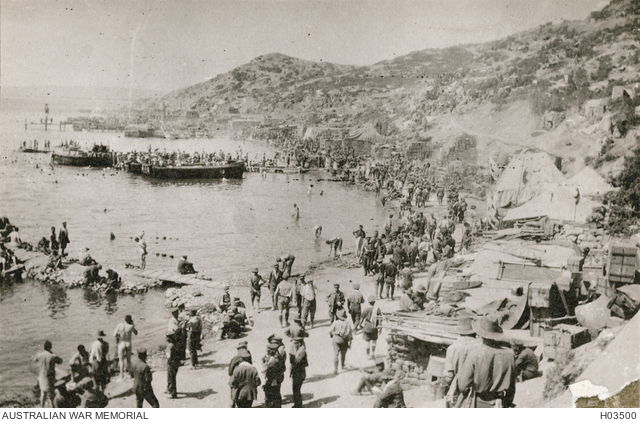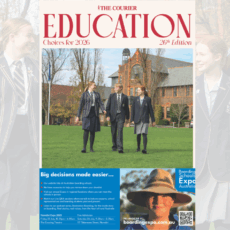Below is the oration read by Gary Mason OAM, Narrabri RSL sub-branch, at the Narrabri West dawn service on Anzac Day.
We meet here, at this bleak hour, on this day every year, to honour the heroism, tenacity, and resilience of that group of young men whose units were sent to Gallipoli where they joined up with equally raw young men from New Zealand.
These Anzacs were joined by the British and French forces and fought in a campaign designed to relieve pressure on our ally, Russia, by opening up permanent and safe sea communications with Eastern Europe and bringing the Balkans on to our side.
By this it was hoped that the duration of the war would be shortened considerably.
But the overwhelming strength of the Turks and, let it be said their bravery, prevented the allies’ success.
The total Gallipoli casualties on our side, numbered 33,000 killed, 78,000 wounded and 8000 missing. Of these, the Australians made up 8500 of those killed and more than 19,000 wounded.
But the shock news of these casualties, far from weakened this country’s resolve, it actually served to strengthen it, and the recruiting rate actually increased. Bearing in mind they were all were all volunteers.
As the news of the casualties began to filter back to Australia, so did the heroism of the Anzacs – from all sources: from the British – amazed at the toughness, the resilience and the tenacity of our inexperienced soldiers; from the French, from the navies involved, and from our own war correspondents like Charles Bean and war artist George Lambert – and not least, from the enemy themselves.
The way these Anzacs bore the brunt of the fight in the Dardanelles stirred in Australians everywhere a new feeling of camaraderie, a feeling that matched the way in which the rest of the world suddenly began to look at Australia – not just as an offshoot of Britain, but as an independent nation of a very independent character.
It is said that every Australian family was affected by the 61,531 Men and Women lost in WWI. Families and communities grieved following the loss of so many men, and women and increasingly assumed the physical and financial burden of caring for families without their loved ones.
The battle fields of the Gallipoli Peninsula possess a special aura. Australians and New Zealanders who travel half way around the world to visit them are invariably struck as soon as they arrive. They feel an affinity with souls of their forbearers who rest there and a deep respect for the Turkish defenders who stood opposite them.
The Gallipoli campaign involved many countries but it had an especially powerful and lasting impact on three in particular – Turkey, Australia and New Zealand. Each was a fledgling nation at the time. Australia and New Zealand were only recently independent from the British Empire and Turkey was still emerging from the Ottoman Empire.
For each, the Gallipoli campaign was a crusade and at the same time, a national rite of passage, all three countries emerged with enhanced international reputations, and each saw its image clarified in its national consciousness. Not surprisingly, each now regards the calamitous event of 1915 as a coming of age in its growth and maturity.
As a footnote to Gallipoli and how countries can forgive but do not forget. In 1985 at Ari Burnu Cemetery at the northern end of the Gallipoli Peninsula, the Turkish government unveiled a monument and officially named the place Anzac Cove.
The monument immortalises the words of Mustafa Kemel. One of the commanders who fought against the Anzacs and who went on, as Kemal Ataturk, to become the first president of his nation. Addressing Anzac and British veterans and their families in 1934, he said:
“Those heroes that shed their blood and lost their lives …
You are now lying on the soil of a friendly country.
Therefore rest in peace.
There is no difference between the Jonnies and the Mehets to us where they lie side by side here in this country of ours … You the mothers, who sent their sons from far away countries,
wipe away your tears; your sons are now in our bosom and are in peace.
After having lost their lives in this land they have become our sons as well.”
We also pause today to acknowledge all current and former members of our defence forces – the brave men and women who represent our country on a daily basis. No Australian is left untouched when a member of our defence force is killed in action. It is difficult to comprehend the grief associated with the loss of a parent, partner, child or sibling, so let us
also ensure that we remember the families.
The Afghanistan conflict has seen 42 members of the Australian Defence Force killed in action with a further 262 wounded. As you are well aware we have lost many more service
personnel on their return to Australia after serving in the above conflicts.
This was brought closer to home on August 30, 2012, when we tragically lost Private Nathanael Galagher one of our own Pilliga boys KIA.
We have seen our personnel serve in Australia and overseas carrying on the spirit of Anzac. We must not forget today’s veterans, the young men and women who have returned from duty in places like Afghanistan, Iraq, Solomon Islands and East Timor.
Anzac Day is a day to remember all men and women of the Australian Defence Force, regardless of the time they served. Lest We Forget.
Note: Private Galagher was serving with the Special Operations Task Group in Afghanistan when he was tragically killed in a helicopter crash on August 30, 2012 (local time Afghanistan).
To order photos from this page click here










